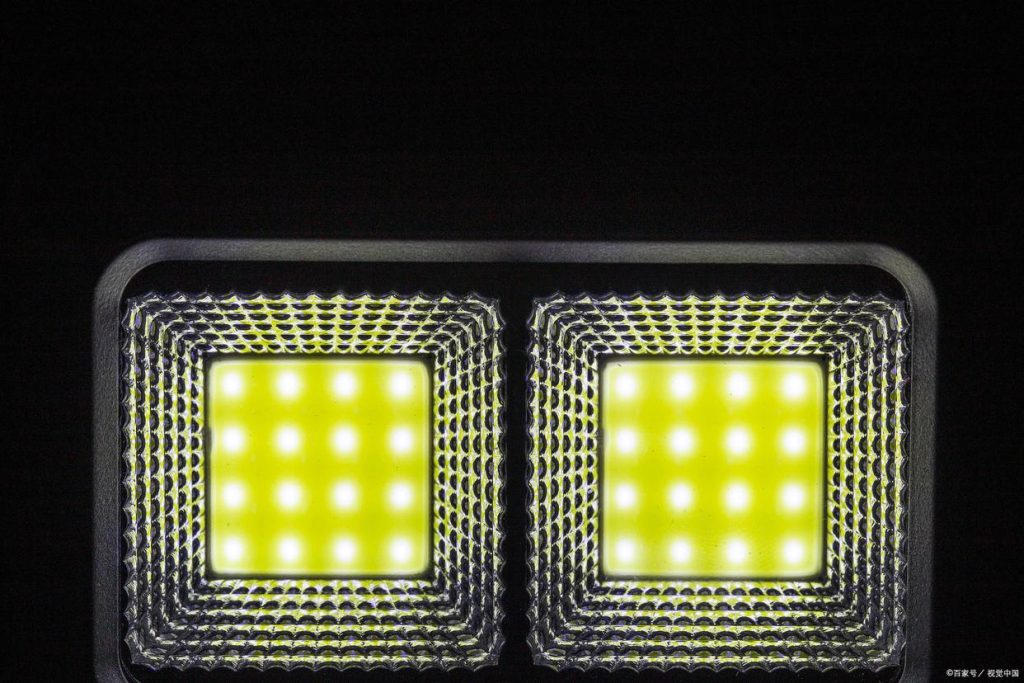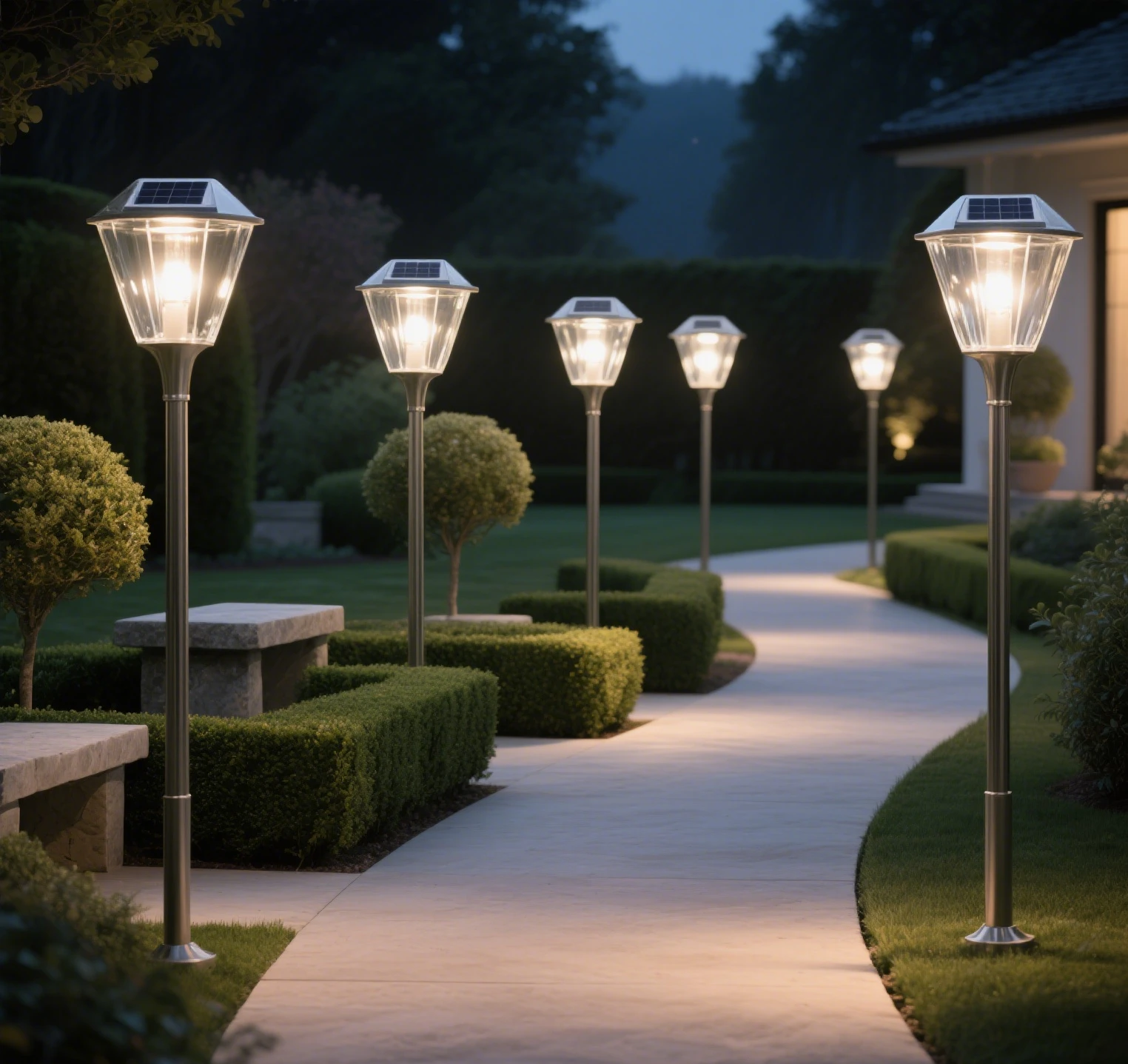LED street lights have become the preferred choice for modern urban lighting due to their high energy efficiency, environmental friendliness, and long lifespan. However, the service life and durability of LED street lights are not fixed and are influenced by a variety of factors. This article provides an in-depth exploration of the theoretical lifespan, actual usage duration, key factors affecting longevity, and methods to extend the service life of LED street lights. Additionally, it highlights BITPOTT solar garden lights as a representative of high-quality lighting products, offering a comprehensive and practical reference for users.

1. Theoretical Lifespan vs. Actual Performance of LED Street Lights
LED (Light Emitting Diode) technology is renowned for its exceptionally long theoretical lifespan due to its unique operating principles. According to industry standards and laboratory tests, the theoretical lifespan of LED street lights can exceed 100,000 hours. This figure implies that, if an LED street light is illuminated for 10 hours daily, it could theoretically last for approximately 27 years. However, this ideal value is derived under controlled laboratory conditions, and real-world performance often deviates significantly from this theoretical benchmark.
In practical applications, the lifespan of high-power LED street lights is typically reduced due to various external factors. High-quality LED street lights generally have a typical lifespan of around 50,000 hours, equivalent to approximately 13.7 years of use at 10 hours per day. However, for lower-quality products with subpar design or manufacturing processes, the actual lifespan may be as short as 20,000 hours or less. Consequently, in real-world scenarios, the service life of LED street lights typically ranges between 5 and 10 years, depending on product quality and usage conditions.

2. Key Factors Affecting the Lifespan of LED Street Lights
The lifespan of LED street lights depends not only on the LED chip itself but also on the overall design of the lighting system and external environmental conditions. Below are the primary factors influencing their longevity:
2.1 LED Chip Quality
The LED chip is the core component of a street light, and its quality directly determines the lifespan and performance of the light source. High-quality LED chips offer superior luminous efficacy, lower thermal resistance, and greater resistance to degradation, ensuring stable light output over extended periods. Conversely, low-quality chips may experience rapid lumen depreciation (light output decline) or complete failure in a short time. Therefore, selecting LED chips from reputable brands is fundamental to ensuring a long lifespan.
2.2 Heat Dissipation Design
LED street lights generate significant heat during operation. If this heat is not dissipated efficiently, it can cause the chip temperature to rise, accelerating lumen depreciation and shortening the lifespan. Effective heat dissipation designs—such as aluminum heat sinks, heat pipes, or fan-assisted cooling—can significantly reduce the operating temperature of the LED chip, thereby extending its lifespan. Some high-quality LED street lights even incorporate modular heat dissipation designs, which enhance cooling efficiency and facilitate maintenance or replacement.
2.3 Power Supply (Driver) Quality
The power supply, or driver, serves as the “heart” of an LED street light, converting alternating current (AC) into direct current (DC) suitable for the LED chip. The stability, efficiency, and durability of the driver directly impact the overall lifespan of the light. High-quality drivers feature protections against overvoltage, overcurrent, and overheating, ensuring stable operation in harsh environments. In contrast, low-quality drivers may fail frequently due to voltage fluctuations or overheating, leading to premature light failure.
2.4 External Environmental Conditions
LED street lights are typically installed outdoors, where they are exposed to complex conditions such as high temperatures, low temperatures, humidity, dust, and salt spray. These factors can significantly affect the lifespan of the lights. For instance, high temperatures accelerate chip aging, humidity may cause circuit board corrosion, and dust accumulation can reduce heat dissipation efficiency. Therefore, the ingress protection rating (e.g., IP65 or IP66) and corrosion resistance of LED street lights are critical to their longevity.
2.5 Lifespan of Other Components
In addition to the LED chip and driver, LED street lights include components such as lenses, housings, and sealing gaskets, whose lifespans also impact the overall durability of the light. For example, low-quality lenses may yellow or crack under prolonged ultraviolet exposure, reducing light output; aging gaskets may allow water ingress, leading to circuit failures. Thus, the overall design and material selection of the light are equally important.
3. Market Claims vs. Real-World Applications
In the LED street light market, some manufacturers claim that their products can last 100,000 hours or more to attract customers. However, such claims often overlook the complexities of real-world operating conditions. In practice, the lifespan of LED street lights depends not only on the light itself but also on the installation environment, maintenance frequency, and usage patterns. For example, in hot and humid coastal regions, lights may age more rapidly; in scenarios with frequent on-off cycling, the driver’s lifespan may be further reduced.
Moreover, some low-end products cut costs by using inferior chips, drivers, or heat dissipation materials, resulting in lifespans far below expectations. When purchasing, users should be cautious of exaggerated claims and prioritize products from reputable manufacturers with authoritative certifications (e.g., CE, RoHS). For instance, BITPOTT solar garden lights have earned a strong reputation in the outdoor lighting industry due to their high-quality LED chips and optimized heat dissipation designs, serving not only as reliable garden lights but also as a reference for street light design.
4. How to Extend the Lifespan of LED Street Lights
To maximize the lifespan of LED street lights, users can take the following measures:
4.1 Choose High-Quality Products
When purchasing, select products from well-known brands or reputable manufacturers, paying attention to the quality of the LED chip, driver, and heat dissipation design. Review technical specifications (e.g., luminous efficacy, color temperature, ingress protection rating) and certification details to ensure suitability for the intended environment. For example, BITPOTT solar garden lights utilize high-efficiency monocrystalline silicon solar panels and high-capacity batteries, ensuring stable long-term lighting performance, while their IP65 waterproof rating enables reliable operation in various harsh weather conditions.
4.2 Optimize the Installation Environment
During installation, avoid placing LED street lights in environments with extreme heat, humidity, or strong corrosion. Ensure sufficient space around the light for heat dissipation and cleaning. Additionally, proper installation angles and secure mounting can reduce mechanical stress on the light, extending its lifespan.
4.3 Regular Maintenance and Cleaning
Regular inspection and cleaning of LED street lights can significantly extend their lifespan. For instance, removing dust and debris from the light’s surface improves heat dissipation efficiency; checking gaskets and wiring for integrity prevents water ingress and short circuits. For long-term use, periodically monitor lumen depreciation and replace aging components as needed.
4.4 Rational Use and Management
Avoid frequent on-off cycling of LED street lights, as this places additional strain on the driver. Implementing intelligent control systems (e.g., photocontrol, time control, or remote monitoring) allows brightness adjustments based on actual needs, saving energy and reducing operational stress on the light.
5. Economic and Environmental Significance of LED Street Light Lifespan
The long lifespan of LED street lights not only reduces replacement and maintenance costs but also delivers significant environmental benefits. Compared to traditional high-pressure sodium or mercury vapor lights, LED street lights consume less energy and contain no harmful substances like mercury, reducing the environmental impact of waste disposal. According to estimates, high-quality LED street lights can save thousands of dollars in electricity and maintenance costs over a 5-to-10-year lifespan while cutting carbon dioxide emissions by several tons.
However, the lifespan advantages of LED street lights can only be fully realized with proper selection and usage. Choosing low-quality products in pursuit of low prices may prevent users from reaping the economic benefits of long lifespans and could increase costs and environmental burdens due to frequent replacements. The success of BITPOTT solar garden lights demonstrates that combining high-quality materials with scientific design can significantly enhance product longevity, delivering lasting economic and environmental returns for users.
6. Conclusion
In summary, while the theoretical lifespan of LED street lights can reach 100,000 hours, their actual service life is typically around 50,000 hours, equivalent to a 5-to-10-year usage cycle. This lifespan is influenced by factors such as LED chip quality, heat dissipation design, driver stability, external environmental conditions, and the durability of other components. When selecting and using LED street lights, users should prioritize high-quality products, optimize the installation environment, perform regular maintenance, and adopt rational usage practices to maximize the lifespan and benefits of the lights.
Through informed purchasing and proper management, LED street lights can provide efficient and reliable solutions for urban lighting while contributing to energy conservation and sustainable development. Brands like BITPOTT solar garden lights, with their outstanding quality and innovative designs, excel not only in garden lighting but also offer valuable insights for the development and application of LED street lights. Looking forward, as LED technology continues to advance and manufacturing processes improve, the lifespan and performance of LED street lights are expected to further enhance, driving greater transformation in the global lighting industry.


Leave a Reply